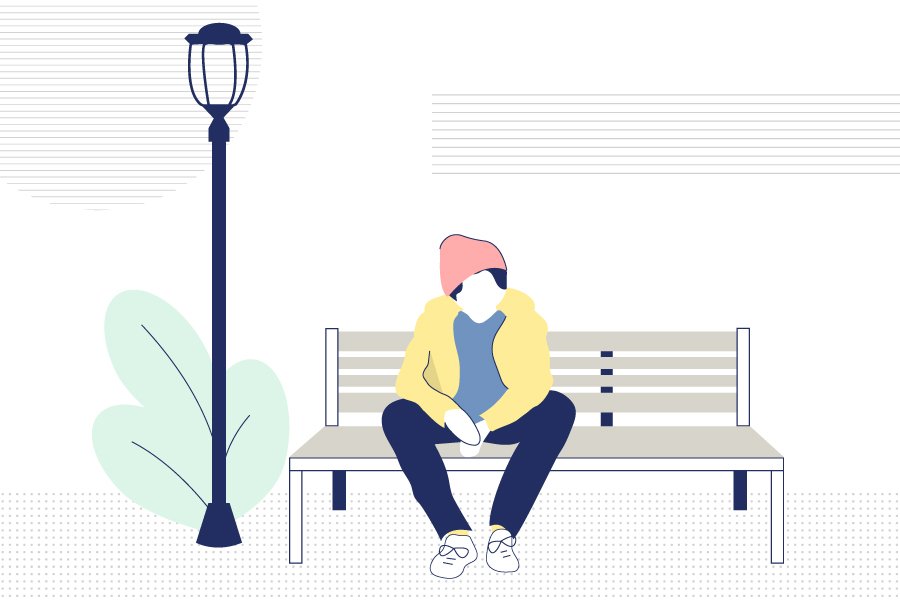The Connection Between Mental Illness and Homelessness
For most, homelessness is a fluid situation, a state they phase in and out of as they grapple with economic, personal, or relational struggles. Mental illness and homelessness are strongly correlated — according to a study conducted by the scientific journal JAMA Psychiatry, 67 percent of Americans experiencing homelessness suffer from a serious mental illness, while 77 percent have experienced some degree of mental illness in their lifetimes. Failure to offer these individuals the attention or care they require contributes to a high recurrence of homelessness and perpetuates the issue.
With Erie County experiencing unseasonably cold temperatures and its first major snowfalls this month, the hardships of persons experiencing homelessness locally are magnified. ECCM seeks to limit homelessness by treating those disproportionately affected — individuals coping with mental illnesses and addiction problems — through our Homeless Behavioral Health and Shelter Plus Care programs.
What does the Erie County homeless adult population look like?
Erie Home Team, a coalition of community organizations (including ECCM) committed to eradicating homelessness, prepares an annual Single-Point-In-Time (SPIT) report on what the homeless population looks like on a given night. While SPIT report data is not the definitive measure of local homelessness, it provides a telling snapshot. A recent report was conducted on the night of January 25th, 2024, and drew these insights:
- 454 Erie County residents were identified as homeless.
- 76 of those homeless were unsheltered and living in a place not meant for human habitation.
- 378 were in an emergency shelter or transitional housing program.
- 37 families were identified in shelters, consisting of 116 persons and 73 children under 18.
- 47% of adults on this night battle mental illness and 36% face substance use disorders.
- An additional 577 people were resigning in permanent supportive or rapid rehousing programs (the "near homeless").

Why do so many individuals find themselves homeless?
Mental illness and homelessness are painfully interwoven into our societal fabric, and they have a myriad of causes — thus there is no single or easy cure. Some of the most common include:
- Affordable housing shortages.
- Housing discrimination based on race, ethnicity, immigration status, and/or sexual orientation.
- Lack of adequate income, stemming from a loss of job or lack of available public assistance.
- Inability to pay for healthcare.
- Traumatic events, such as the loss of property from a fire or extreme weather event, or serious injury or death to a household’s primary earner. Traumatic brain injuries are particularly prevalent, with over half of homeless individuals having experienced such injuries.
- Fleeing domestic violence.
- Mental health and addiction challenges, which can both contribute to and exacerbate homelessness.
Poor mental health is both a cause and consequence of homelessness, deeply interrelated with housing instability and impacting vulnerable populations. Various programs aim to address these dual challenges by integrating mental healthcare with housing support.
And as a community, we need to allocate the necessary resources to help break this vicious cycle.
ECCM’s role in the fight to end homelessness
Severe mental illnesses are major hurdles to clear on their own — now add a layer of difficulty to all of the challenges discussed previously. Assertive community treatment is recognized as the most effective approach in addressing severe mental illness among the homeless, providing intensive support through a multidisciplinary team.
Our Homelessness Behavioral Health services deliver support to persons with severe illnesses in the form of treatment, rehabilitation, and housing resources, addressing the critical need for improved mental health care and the challenges faced by the homeless population in accessing it. Mental health professionals play a crucial role in addressing the mental health needs of the homeless, adapting their practices to consider social determinants impacting mental health. As such, effective mental health service administration is essential in implementing programs that improve mental health outcomes for individuals experiencing homelessness.
Our Shelter Plus Care program is an integrated mental health treatment solution assisting those with drug or alcohol addictions with housing as they commit themselves to independence once and for all.

